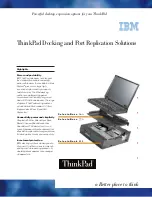
3-24 Using the BIOS Setup Utility
Windows 98 SE and Intel SpeedStep Technology
Use the Intel SpeedStep technology (available in systems with Intel Pentium III
processors) to optimize processing speed and conserve battery life.
Enable Intel SpeedStep technology through the Power menu (Intel SpeedStep2) in the
BIOS Setup utility. The available settings are Disabled and Enabled. Use Disabled to
turn off Intel SpeedStep2 technology.
If Intel SpeedStep2 technology is enabled in your system, an icon appears on your
taskbar allowing you to adjust processing properties. However, the default settings are
recommended for optimal performance and battery conservation.
For information about accessing the BIOS Setup utility and the Intel SpeedStep2
technology parameter, see “Entering BIOS Setup” and “Power Menu” earlier in this
chapter.
Windows Power Management States
ACPI uses different levels or states of power management. These power management
states occur automatically, based on the system’s default settings, or manually, when
invoked. Settings are configurable to occur while on battery power or AC power.
The ACPI power management states in the Windows 2000 and Windows 98 SE
environments include:
LCD timeout — manages power at the lowest level by shutting down the LCD.
Standby — also known as Save-to-RAM (STR), Standby manages power by saving
your current working environment to memory and shutting down most system
devices. Conserves more power than an LCD timeout.
Hibernate — also known as save-to-disk, Hibernate manages power by saving the
current working environment to an area on your hard disk, then powering off your
system. Conserves the most battery power.
Summary of Contents for Versa L320
Page 1: ...Versa L320 Notebook Computer User s Guide ...
Page 138: ...9 Using Multimedia Audio Video Multimedia Applications ...
Page 143: ...10 Solving System Problems Problem Checklist Startup Problems If You Need Assistance ...
Page 158: ...B Specifications System Components Interrupt Controllers Memory Map ...
















































